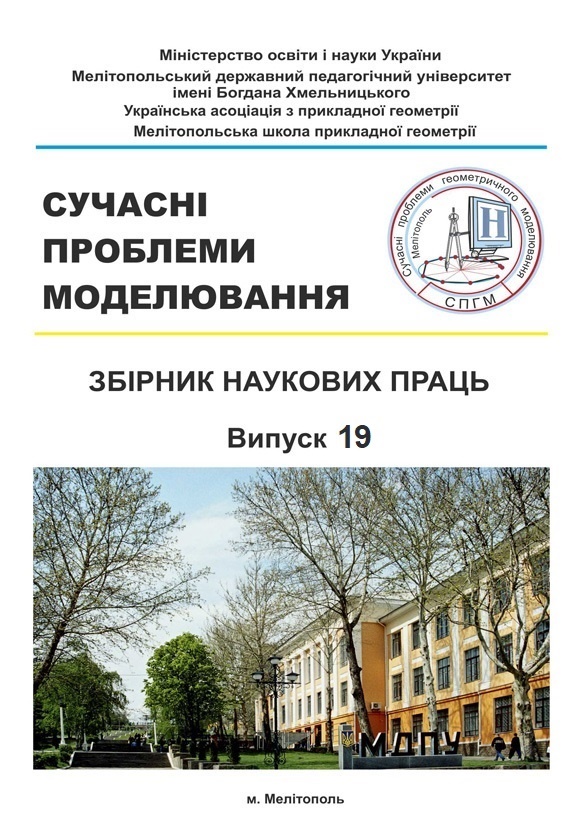GEODESICALLY PARALLEL TRANSFER OF A VECTOR ALONG THE CURVE ON THE SURFACE
Abstract
The paper considers one of the ways to construct geodetically parallel vectors on a curved surface. Solving this problem allows us to build a model of the Chebyshev grid on the surface.
The model of the Chebyshev grid is called a mesh frame applied to the surface. It has the properties of this grid with a fairly short side length of the cell.
The urgency of building a model of Chebyshev mesh on surfaces is due to the increasing use in mechanical engineering of fibrous composite materials that have a mesh structure. The property of the Chebyshev grid to remain Chebyshev with arbitrary bending can be used to construct a surface pattern of a complex technical form.
The tangent vectors to the lines of one family of the Chebyshev grid drawn at their points of intersection with the lines of the second family are geodesically parallel. Therefore, the construction of such vectors along an arbitrary curve on the surface will allow to obtain a model of the Chebyshev grid in an arbitrarily chosen direction of the selected grid family.
The method of geodesically parallel vector transfer along a given curve on the surface is proposed in the work. This curve is the line of stretching (throat) of the linear surface given by this family of directions. The proposed construction procedure allows for a relatively small number of calculations to obtain a vector field of the directions of the duck lines. Construction accuracy can be increased by reducing the linear construction parameter.
Since the final result of the calculations is to create a model of the Chebyshev grid and obtain a pattern of mesh coating, the possibility of adjusting the construction parameters depending on the curvature of the surface is embedded in the code of the corresponding calculation program.
Keywords: Chebyshev grid, geodesically parallel vector transfer, stretching line.




